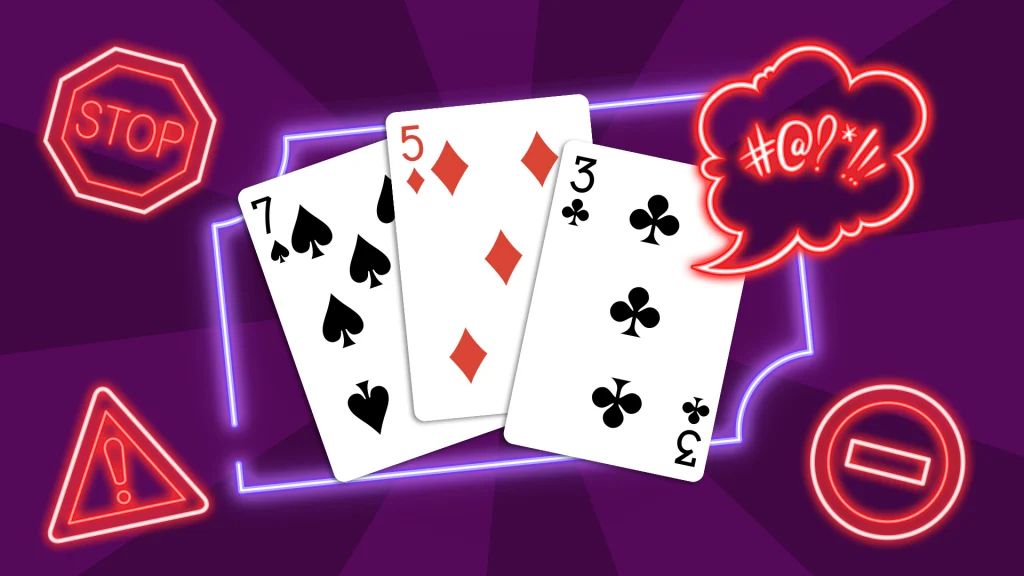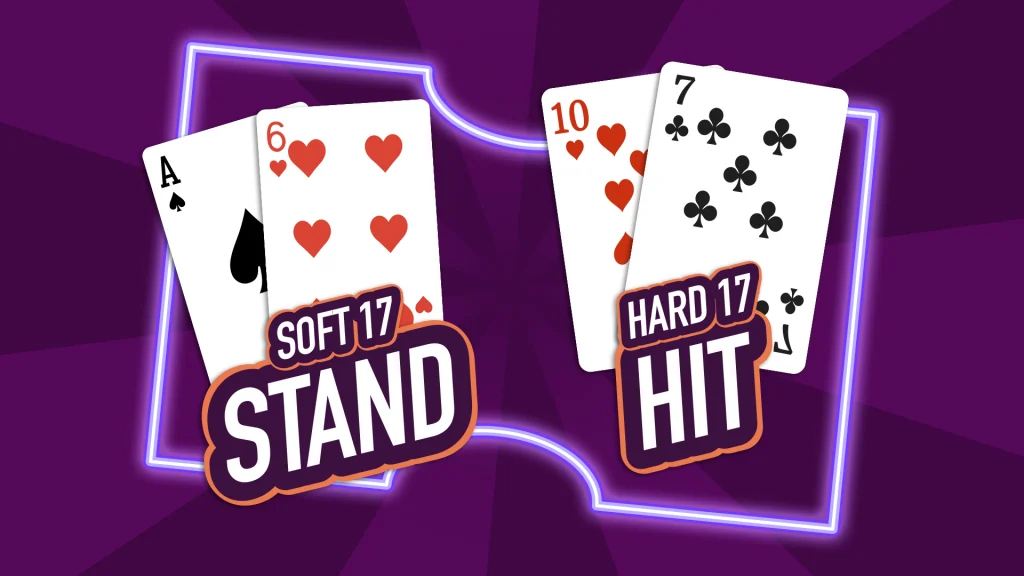How to Survive & Thrive With a 15 in Blackjack
Nothing strikes terror in a player’s heart quite like a 15 in blackjack. Missing a deadline? You’ll survive. A nightmare about arriving pantsless for your final exam? Psssh. A cakewalk! There’s nothing that says “oh no….” like a blackjack 15.
But before you bolt off to play something gentler, square your shoulders and stick it out for a few more minutes. Allow us to de-terrify this hand with concrete, math-backed tips that show you how to play a hand of 15 in blackjack.
By the time we’re done, you’ll know exactly what to do with a 15, fully clothed and completely prepared.
Soft 15 vs Hard 15
A hard 15 means any combination of cards totaling 15 that doesn’t include an ace. Think 10 and 5, 9 and 6, or 7-5-3. Its total is concrete.
A soft 15 means your hand includes an ace counted as 11, like ace-4. That ace gives you flexibility because it changes to a 1 or 11 based on the optimal total.
For a move that’s always a hard yes, deposit with crypto to play blackjack as Bitcoin gambling. Open a simple crypto wallet, and enjoy the fastest, safest deposits with the fewest fees.
Do you hit on 15? Evaluating the Dealer’s Up Card

We know a hard 15 is the blackjack equivalent of being stuck in traffic behind a tractor. It’s frustrating, and there’s no clear way forward.
But how dire your situation is depends entirely on the dealer’s upcard. Do you hit on 15 in blackjack? Do you stand on 15 in blackjack? That depends.
Below, we’ll help you make the optimal move, based on the dealer’s upcard in a single-deck game where the dealer hits on soft 17 (H17).
Dealer’s 2-6: Stand
When the dealer shows a 2 through 6, your 15 gets a rare moment to play defense. You’re not trying to build a better hand; you’re waiting for the dealer to mess up so you can swoop in and intercept the win.
Two through six are known as bust cards, and for good reason. In a single-deck H17 game, the dealer is more likely to go over 21 with these upcards, especially since they have to hit on soft 17. So instead of risking a bust by hitting your fragile 15, let the dealer do the dirty work.
Truth be told, you’ll lose in plenty of these scenarios anyway, but remember: the goal is to make the best move that decreases the house edge over time. The optimal play won’t result in a celebration every round. Instead, it helps you lose less in the long run.
Dealer’s 7-Ace: Hit or Surrender
When the dealer’s rocking a 7 through ace, your 15 has no business standing still. This is not a wait-and-see moment like microwaving fish in the office five minutes before corporate shows up. Or was that F around and find out? Our free Office Bingo should know. Anyway, a hand of 15 against a dealer’s 7-ace is more of a hit-it-and-hope situation.
These upcards are statistically strong, and the dealer is likely to end up with a made hand thanks to the higher number of 10-value cards in the deck.
You need to swing at the problem and hope for a low card to bring you up to at least 17. If you draw an ace, congrats, now you have 16. That’s still not great, and you’re still hitting. And if surrendering is on the table when the dealer shows an ace, it’s worth folding early and cutting your losses.
It’s rough out there, but you get through a blackjack 15 by making the least-worst decision.
To make such a hand feel a little less troublesome, invite a friend to sit beside you and helpfully declare, “You’ve got this,” when you receive a 15. (Thanks, Kevin. We can always count on you.) When they sign up, we’ll deposit a cash casino referral bonus into your account as a reward.
What to do with a soft 15?
What to do with a soft 15? Easy. (And the crowd goes wild.) You hit. Every time.
A soft 15 means you’re holding an ace and a 4. Thanks to that flexible ace, you can take a swing without busting. If you draw a big card, the ace shifts from 11 to 1 and keeps your hand in play. It’s a safety net that means you should always hit for the home run.
Even more so, if the dealer is showing a 4, 5, or 6 and doubling is allowed, you should double down. It could be a high-reward move because the dealer is more likely to bust, and you have room to grow.
When your soft 15 is faced against anything else, just hit and keep building.
Differences Between S17 & H17 Games

The difference between S17 (stand on soft 17) and H17 (hit on soft 17) may seem insignificant, but it’s not invisible like an iPhone upgrade. This difference changes the math and noticeably increases the house edge.
In an S17 game, the dealer must stand if they reach a soft 17, like ace-6. This gives you a better chance to win with marginal hands because the dealer doesn’t have an opportunity to improve their hand.
In H17 games, the dealer hits on soft 17, giving them a chance to improve their hand and making them stronger overall. That extra draw gives the house a bigger edge, usually about 0.2% more. It also changes basic strategy in situations like how to play a soft 18 and soft 15, and even when to double.
Differences Between Single & Double-Deck Games
It might seem like splitting hairs (only if the table allows it, ba-dum-tsss), but the number of decks changes the math behind your every move, especially whether to surrender on 15.
In double-deck H17 games, the dealer is required to draw on soft 17, which slightly increases their chances of improving a strong upcard, like a 10 or ace, into a winning hand. That makes surrendering your hard 15 in these situations the better long-term move.
It doesn’t work quite the same way in single-deck, H17 games. In this case, the higher concentration of 10-value cards means you surrender a hard 15 less often than in double-deck games. Surrender only when the dealer shows an ace.
In any of these situations, if surrendering is not allowed, hit as usual. If you have a soft 15, take advantage of the ace’s flexibility and hit.
If that sounds confusing, don’t stress it. The easiest way to avoid blackjack mistakes and remember whether to hit or stand on 15 is always to use a chart for the deck count you’re playing with.
With a 15 in blackjack, you’re not aiming to win every round. You’re aiming to make the least costly decision each time and keep the house edge as low as possible over the long run. It’s a tough hand, but if you can handle missing deadlines and surprise visits from your in-laws, you can handle the blackjack 15. Try blackjack for free using Practice Play at Cafe Casino, and remember, when the hand gets tough, never surrender! Well… except for some occasions when the dealer shows a 10.